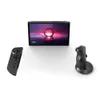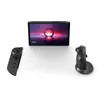Lenovo Legion Go S vs. Asus ROG Ally X — which gaming handheld wins?
Is Lenovo's latest handheld better than the ROG Ally X?
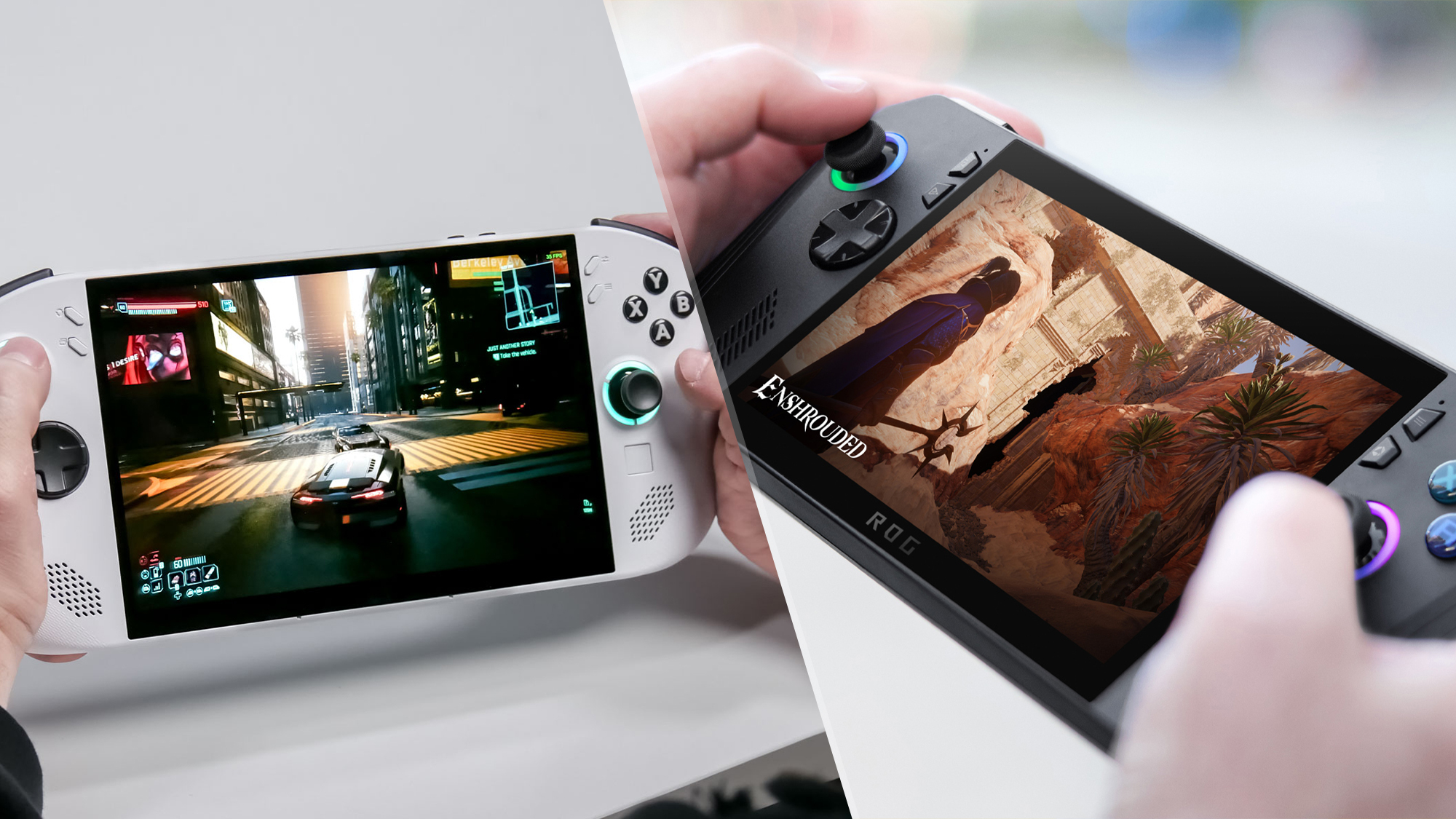
The Lenovo Legion Go S is here as a more portable version of the Lenovo Legion Go. It features an ergonomic design, a vivid 8-inch display and runs cool and quiet. It’s also the first gaming handheld to feature the new AMD Ryzen Z2 Go chip.
At its current price of $729, this configuration of the Legion Go S is a direct competitor to one of the best handheld gaming consoles, the Asus ROG Ally X, which is another Windows 11-driven device powered by an AMD chip. Since both devices are currently available at Best Buy, you might be wondering which one to purchase. We’re here to help.
Which one is the best gaming handheld for you? Read on to find out the key differences between the Lenovo Legion Go S and Asus ROG Ally X.
Lenovo Legion Go S vs. Asus ROG Ally X: Specs
| Row 0 - Cell 0 | Lenovo Legion Go S | Asus ROG Ally X |
| Price | $729 | $799 |
| Display | 8-inch (1920 X 1200) LCD | 16:10 | 120Hz | 7-inch (1920 x 1080) LCD | 16:9 | 120Hz |
| Chipset | AMD Ryzen Z2 Go | AMD Ryzen Z1 Extreme |
| OS | Windows 11 | Windows 11 |
| Memory | 32GB | 24GB |
| Storage | 1TB | 1TB |
| Ports | 1X microSD card slot, 2X USB-C, 1X audio jack | 2x USB-C, 1x 3.5mm audio jack, 1x microSD card slot |
| Dimensions | 11.7 x 5 x 0.8 inches | 11 x 4.4 x 1.5 inches |
| Weight | 1.63 pounds | 1.49 pounds |
Lenovo Legion Go S vs. Asus ROG Ally X: Price
The current model of the Legion Go S isn’t cheap but it’s slightly more affordable than the ROG Ally. Right now, you can get the Legion Go S for $729 at Best Buy. It packs an AMD Ryzen Z2 Go chip, 32GB of RAM, 1TB of SSD storage and has an 8-inch 1200p LCD display.
The Asus ROG Ally costs $799 at Best Buy and features a 7-inch 1080p LCD display, an AMD Ryzen Z1 Extreme chip, 24GB of RAM and 1TB of SSD storage. For $100 more, you can upgrade to a 2TB SSD.
Note that Lenovo will release $499 models of the Legion Go S featuring 16GB of RAM, 512GB of storage, and your choice of SteamOS of Windows 11. You’ll also be able to configure Lenovo’s latest handheld with up to an AMD Ryzen Z1 Extreme chip.
The Legion Go S costs less than the ROG Ally X. That could make it more appealing, but as you’ll see moving forward, price isn’t the only factor you should consider.
Lenovo Legion Go S vs. Asus ROG Ally X: Design
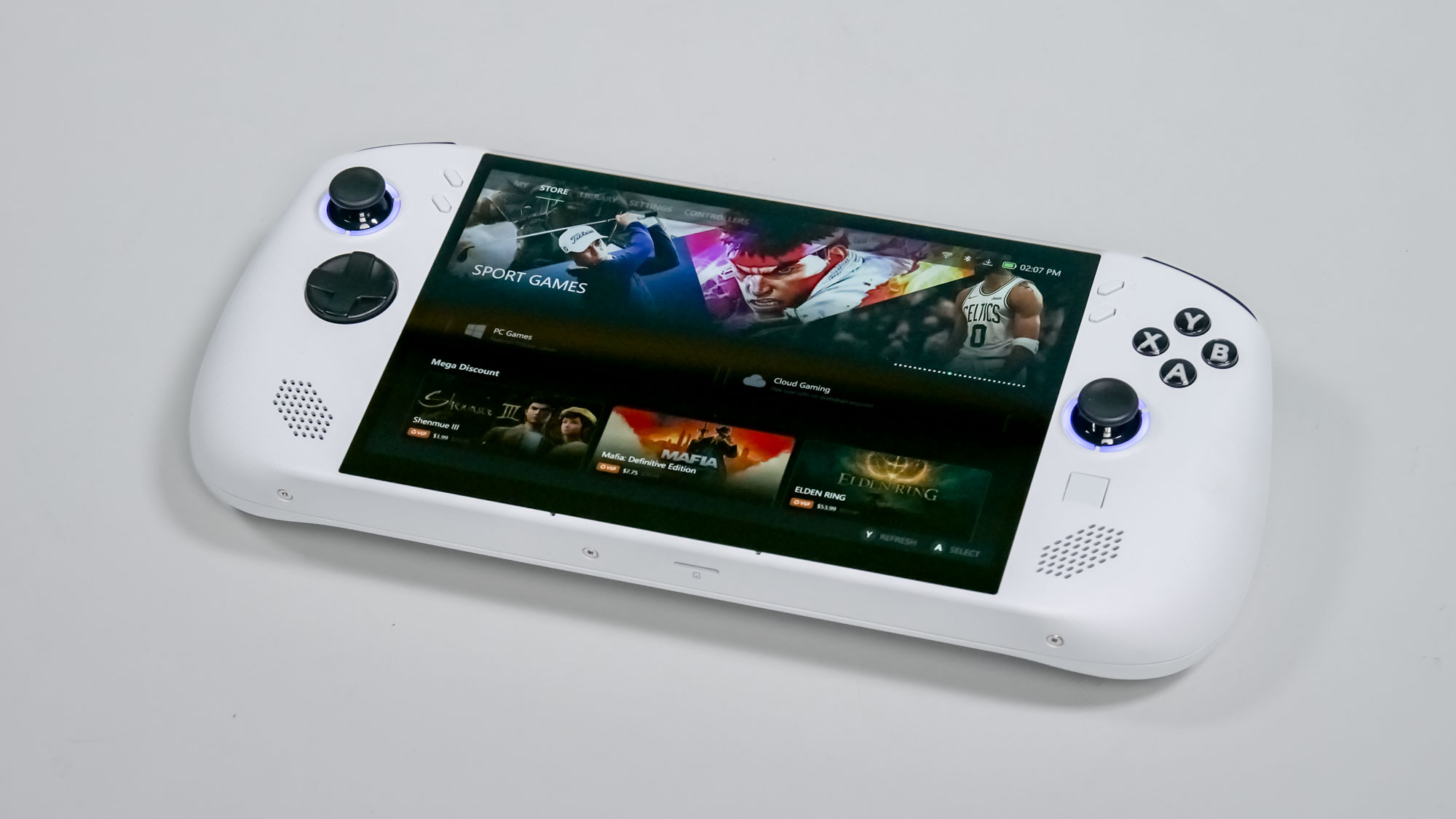
The Legion Go is one of the largest handhelds currently available. While the Legion Go S is bigger than its competitors, it’s not as big as its counterpart. Because of that, this handheld is easier to travel with and hold for longer periods.
The Legion Go S doesn’t have detachable controllers like the Legion Go, but the rounded textured grips make it more comfortable to hold and play on. This system is on the heavier side at 1.6 pounds, but the even weight distribution prevents it from being a burden to use.
Control-wise, the Legion Go S has the same basic design as other handhelds. The two Hall Effect analog sticks move smoothly and the circular D-pad is perfect for fighting games. The four face buttons are satisfying to press, as are the shoulder and trigger buttons. The latter have trigger locks that let you set their respective actuation points. Lastly, you’ll find two programmable buttons on the back and a small touchpad under the right analog stick.
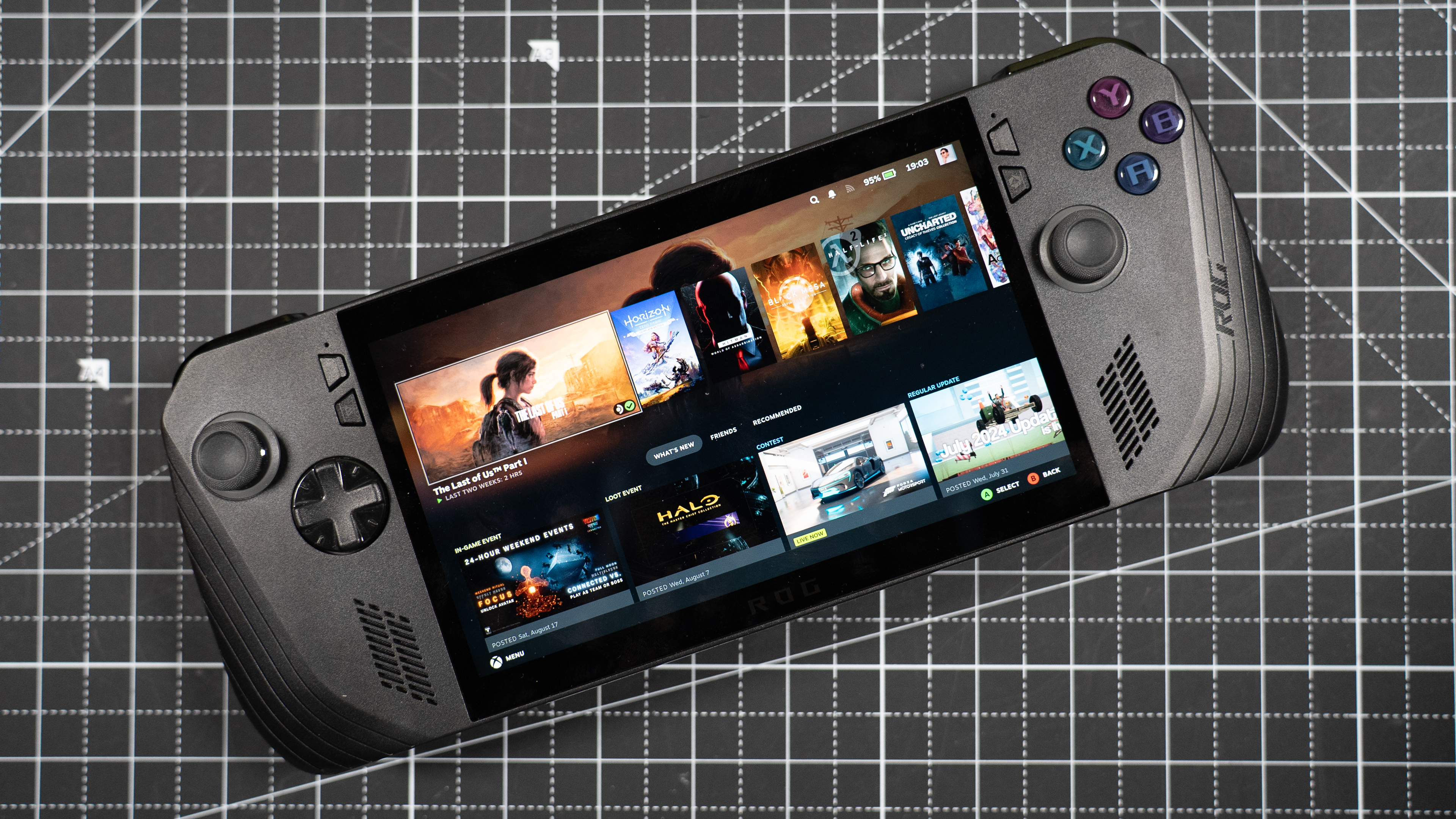
Asus has introduced several design changes that make the ROG Ally X more ergonomic and user-friendly than the original ROG Ally. At 1.5 pounds, it is heavier than the original model but lighter than the Legion Go S. Like its competitor, the weight distribution prevents this handheld from feeling like you’re holding a brick.
The four face buttons, four shoulder buttons, and two analog sticks feel almost identical to the original Ally. The redesigned D-pad, featuring more pronounced up, down, left and right, is slightly larger and easier to use. The small back buttons don’t feel great to use but they serve their purpose.
It’s difficult to say which handheld has the better design since they’re so similar. The ROG Ally X is a bit lighter but the Legion Go S has better back buttons and a touchpad that its competitor lacks. Besides that, you’ll have a similar experience controlling both machines.
Lenovo Legion Go S vs. Asus ROG Ally X: Display

The Legion Go S’ 8-inch (1,920 x 1,200) 16:10 120Hz display is one of its best attributes. Games like Doom Eternal, Cyberpunk 2077 and Dirt 5 come to life in vivid detail thanks to the sharp resolution and vibrant colors. This is true whether you’re playing at the native 1200p resolution or 800p.
The ROG Ally X has a 7-inch display 120Hz 16:9 display with a resolution of 1920 x 1080. Though it’s an inch smaller than the Legion Go S’ display and has a different aspect ratio, games look just as good on Asus' handheld device.
| Row 0 - Cell 0 | Lenovo Legion Go S | Asus ROG Ally X |
| Nits (brightness) | 455 | 523 |
| sRGB | 119.7% | 112.7% |
| DCI-P3 | 84.8% | 79.8% |
| Delta-E | 0.24 | 0.36 |
Here’s how the handhelds fared in our lab tests. As you can see, the Legion Go S has a bright display, and its color reproduction (sRGB and DCI-P3) and color accuracy (Delta-E) are also good. The display on the Asus ROG Ally X can get brighter but not by much. The latter also has comparable color reproduction and color accuracy.
Neither device has an OLED display option, which is a bummer if you’re used to the Steam Deck OLED’s magnificent OLED panel. Aside from that, your eyes won’t complain when playing on either the Legion Go S or ROG Ally X.
Lenovo Legion Go S vs. Asus ROG Ally X: Performance
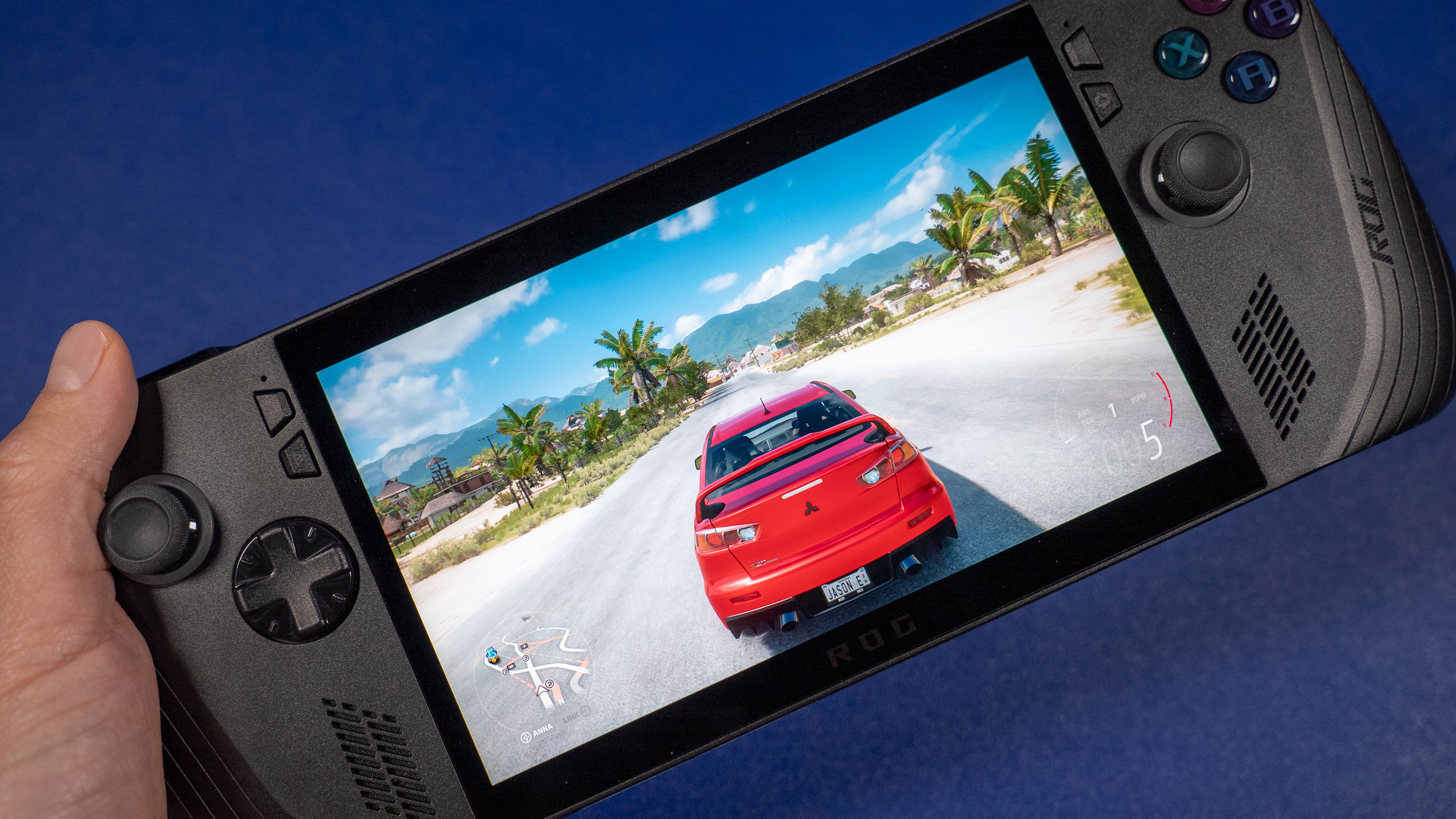
The Lenovo Legion Go S that I reviewed (and the only model currently available) features an AMD Ryzen Z2 Go chip, 32GB of RAM and 1TB of SSD storage. The Asus ROG Ally X we reviewed has an AMD Ryzen Z1 Extreme chip, 24GB of RAM and a 1TB SSD. The most noticeable difference here is the handhelds’ respective APUs, but just because the Legion Go’s AMD chip has a “2” on it doesn’t automatically make it more powerful than the Z1 Extreme.
The Ryzen Z2 Go APU is built on Zen3+ and RDNA 2 technology, rather than the Zen4 and RDNA2 of the Ryzen Z1 Extreme chip found in the ROG Ally X. Performance-wise, the Ryzen Z2 Go sits between the AMD Ryzen Z1 and Ryzen Z1 Extreme. It’s important to keep that last part in mind as we move on to our lab tests.
| Row 0 - Cell 0 | Lenovo Legion Go S | Asus ROG Ally X |
| Assassin’s Creed Mirage | 32 fps | 31 fps |
| Cyberpunk 2077 | 5 fps | 9 fps |
| Red Dead Redemption 2 | 23 fps | 26 fps |
For our lab tests, where we utilize a game’s built-in benchmark tool, the Legion Go S struggled to run most games over 32 frames per second. Assassin’s Creed Mirage was one of the few examples where Lenovo’s handheld did well, even matching its competitors. Cyberpunk 2077’s benchmark results are abysmal, but to be fair, this game benchmarks poorly on other handhelds.
Speaking anecdotally, I experienced better performance on the ROG Ally X than on the Legion Go S. On the ROG Ally X, I got Doom Eternal to run at around 45 to 50 frames per second at Medium graphical settings and 720p resolution. I had to set the graphical settings to Low and the resolution to 720p on the Legion Go S to get the game running between 40 and 45 fps.
In terms of gaming performance, the Ryzen Z1 Extreme-powered ROG Ally X fares better than the Legion Go S. The difference isn’t huge numbers-wise, but you have to account that you don’t have to fiddle with a game’s settings nearly as much on the ROG Ally X to get decent performance.
Lenovo Legion Go S vs. Asus ROG Ally X: Battery life

The Asus ROG Ally X scores another victory in battery life. Though the Legion Go S doesn’t have uncommon battery life for a gaming handheld, Asus’ device stands above almost all of its competitors.
| Row 0 - Cell 0 | Time (hours:mins) |
| Lenovo Legion Go S | 1:42 |
| Asus ROG Ally X | 3:04 |
In our battery life testing involving continuous web surfing over Wi-Fi with the display set to 150 nits, the Legion Go S lasted for 1 hour and 42 minutes. Conversely, the ROG Ally X lasted nearly twice as long on the same battery test. If you’re going on a big trip, the ROG Ally X will keep you entertained for much longer.
Lenovo Legion Go S vs. Asus ROG Ally X: Software and game library
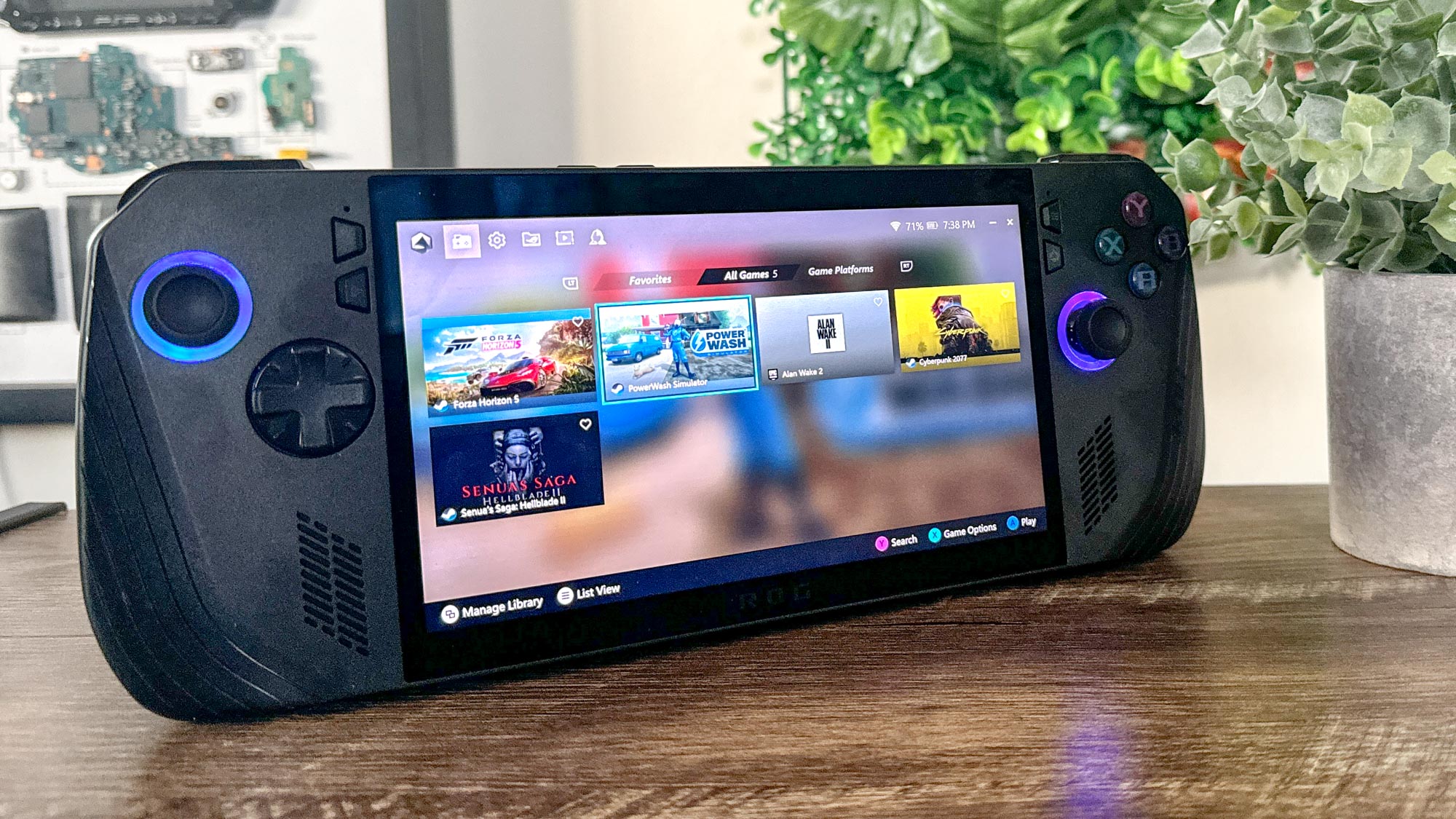
The Legion Go S and ROG Ally X run on Windows 11. Because of that, you’ll get the same basic experience when using them — both for good and ill. As Windows 11 PCs, these handhelds have access to the best PC games for the best gaming PCs and the best gaming laptops. That said, their respective game launchers are slightly different.
Navigating Windows on a small touchscreen by using the analog stick or your finger to move the mouse cursor is many things but fun isn’t one of them. Having to install Windows updates and being asked to install Office 365 or other Microsoft programs is also annoying. I’ve said it before and I’ll keep saying it: Windows 11 sucks for handhelds!
Legion Space and Armoury Crate are the systems’ respective game launchers. Each does a good job of displaying and giving you access to your game libraries across multiple launchers like Steam, GoG, Xbox Game Pass, and more. Their console-like overlays also offer plenty of system customization, such as allowing you to set display resolution, frame rate caps, performance modes, and more. Neither has a distinct advantage over the other as they each serve the same purpose adequately.
Lenovo Legion Go S vs. Asus ROG Ally X: Which handheld wins?
The Lenovo Legion Go S has several great traits. However, it’s priced too high for the disappointing performance it delivers. This will change once models starting at $499 start releasing in the coming months. The model with SteamOS has the potential to be a true Steam Deck rival. But at the moment, it’s difficult to recommend the existing Legion Go S to anyone besides hardcore tech and gaming enthusiasts.
Despite costing $70 more, the Asus ROG Ally X is the better Windows 11 handheld. It's super portable, offers steady gaming performance and has excellent battery life. It’s arguably the best Windows 11 handheld you can buy. That might change when the Windows 11 Legion Go S gets the Ryzen Z1 Extreme chip. But for now, your best bet is the Asus ROG Ally X.
More from Tom's Guide
- 3 upgrades I want to see from gaming handhelds in 2025
- The best gaming handhelds of CES 2025
- These retro handheld game consoles are a perfect hit of nostalgia
Sign up to get the BEST of Tom's Guide direct to your inbox.
Get instant access to breaking news, the hottest reviews, great deals and helpful tips.

Tony is a computing writer at Tom’s Guide covering laptops, tablets, Windows, and iOS. During his off-hours, Tony enjoys reading comic books, playing video games, reading speculative fiction novels, and spending too much time on X/Twitter. His non-nerdy pursuits involve attending Hard Rock/Heavy Metal concerts and going to NYC bars with friends and colleagues. His work has appeared in publications such as Laptop Mag, PC Mag, and various independent gaming sites.

